Seeds Planting Art

Ana Zdravković (Serbia), Fragile Botany, stitched paper
Is it possible to imagine a society in which we humans cooperate following the plants’ modalities for thriving in life, in a logic of sharing competences and inspirations, in a free, non-hierarchical, and voluntary way? With the 2022 Call, “Seeds Planting Art,” our international network of creatives, Artistsforplants, tried it out!
Artistsforplants has taken up the desire of many artists all over the world to foster a more conscious awareness of the centrality of plants in life, both for human beings and for the planet. Our 2022 international call was focused on artworks dedicated to seeds—symbols of hope and renewal—linked to generative emotions and to a vision of a future in harmony. “The seeds show us possibilities of extraordinary vitality, through farsighted visions and long, patient work,” explains Silvia Chiodin, member of Artistsforplants.
Over the summer of 2022, we received a highly diverse range of works from many countries around the world (Argentina, Australia, Canada, Croatia, Finland, France, Germany, India, Iran, Ireland, Italy, Latvia, Mexico, New Zealand, the Netherlands, Portugal, Romania, Serbia, Spain, Switzerland, the UK, the USA, and from a stateless person), which were then selected by a jury that included actress and writer Lella Costa, as well as a representative of the Norwegian Svalbard Global Seed Vault. The collaboration with the Svalbard Global Seed Vault was born to create a dialogue between art, science, and economy: each of them sustaining the other, in order to pursue new models for thriving on earth.
On 10 October 2022, Lise Lykke Steffensen, Director of NordGen, officially announced the selected artworks at the Svalbard Global Seed Vault premises. The video of the announcement and the selected artworks are available at our website. The selected works are beautiful and full of meaning. Along with a video presentation made especially for the occasion, they will remain on display at the Svalbard Global Seed Vault and at the Svalbard Museum throughout 2023. Next year marks the 15th anniversary of the Seed Vault and it will be celebrated with various initiatives throughout the year. In the words of Åsmund Asdal, coordinator of the Seed Vault: “Science, which makes it possible to preserve the seeds’ vitality for a long time, and art, which offers new perspectives, can together point us in directions of harmony between plants and human beings.”
At Artistsforplants, we will also present all the artworks we received on our social media channels.
Throughout the entire process of imagining and creating the “Seeds Planting Art” Call, all parties involved were inspired by the ways plants cooperate and communicate in an communal way. Strong evidence of plants being collaborators rather than competitors comes from the sciences, too. In fact, in contrast to the belief of many traditional evolutionary biologists of the twentieth century who assume that competition is the cause of evolution and that natural selection is based on the “survival of the fittest” (which means that competition eliminates the weaker adaptations, generally caused by mutations), many biologists today argue for a different view. Lynn Margulis, for example, underlines how cooperation among species leads to the formation of new organs and other types of adaptations. The key word here is symbiosis.
Botanist Stefano Mancuso, too, invites us to look at the plant world as a model of cooperation to be taken into account in politics and economics.
For me, coordinating this initiative has been a source of joy and it gave me hope for humanity. The relational modes of interaction were positive and created purposeful connections. We all learned from the communicative modalities of plants, which are subtle but very poignant. For instance, Silvia Chiodin, of Artistsforplants, says: “I am a director, I have learned a lot from my work, especially to shift my point of view. And I have also seen how much ‘waste’ there is in our human relationships. Plants, on the other hand, are more effective. They seem motionless, inactive, impassive, but they aren’t! They communicate a lot, in a horizontal and voluntary manner.”
The enormous response to our call shows that attention to the world of plants is a seed that keeps growing.
In what follows we present a number of examples that give you an impression of the spectrum of extraordinary works that the Seeds Planting Art Call received, along with the artists’ explanations.
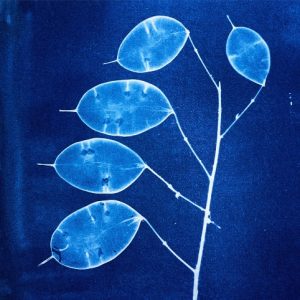
Sarah Garrod, “Honesty is always the best policy” – Lunaria annua, Cyanotype prints
“The cyanotype process was pioneered by Anna Atkins in the 1800s when she used it for documenting seaweed. Since lockdown, I found it an ideal process for my ‘garden darkroom’ and to examine some of the wild and planted flowers that flourish there in the midst of the polluted city of London. Whenever I have questions or worries, I look for answers in nature, and I find them there. The Honesty Plant is regarded as a weed by many, but it produces the most amazing translucent seed pods which react to light in a unique way, like very fine insect wings or tracing paper. They are a ‘gift’ to artists. There is something very sci-fi about their shape.“ (Sarah Garrod, UK)
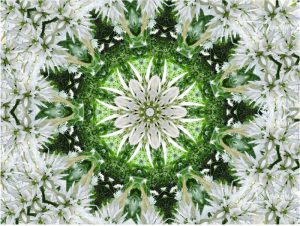
David Watson Hood, Wild garlic, Allium ursinum L.
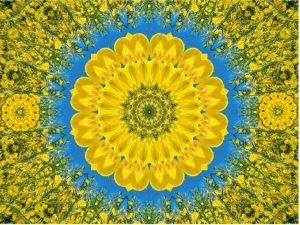
David Watson Hood, Broom: Cytisus scoparius L.
“The images are kaleidoscopic digital manipulations of macro photographs of the plant flowers. They were originally produced by me for a solo exhibition entitled ‘Other Flowers of Scotland,’ consisting of several large format kaleidoscopic images of native and cultivated plants with high cultural significance in Scotland.” (David Watson Hood, UK)
Annette Arlander (Finland), Meetings with Remarkable and Unremarkable Trees, video
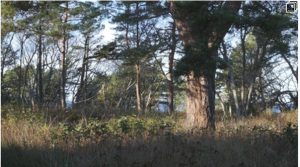
Annette Arlander, Meeting with Remarkable and Unremarkable Trees
“Emphasizing individualism is a risky strategy in our current neoliberal capitalist society, where the importance of individualism is exaggerated anyway. It can nevertheless be useful to focus on singular trees, as an important first step towards decolonizing our relationship with “nature.” As late ecofeminist Val Plumwood (2003) pointed out, colonial thinking tends to emphasize a very strong difference between “us” and “them”, and to see “them” as all alike, stereotypical, non-individualized. Thus, attending to particular trees might work as a way to help us see trees as life forms that we have much in common with, despite our undeniable differences.” Annette Arlander (Finland), Meetings with Remarkable and Unremarkable Trees, video
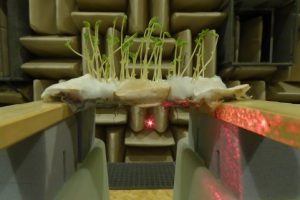
Anja Binder, Sound of Roots
Anja Binder (Germany), Sound of Roots. Photo showing the recording of the root vibrations of a corn seedling. Plants, across different species, emit certain frequencies depending on the condition.
Anja Binder’s research shows that it is possible to record the emissions of the root apex, the living part of the root. The roots emit vibrations. The frequencies emitted by the radical apex are not transmitted inside the plant, but only outside. They can propagate through the air as sound and can be perceived by other organisms. The plants communicate with life forms!
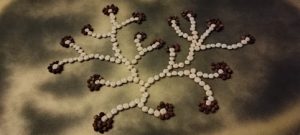
Amelia De Lazzari, “Embroideries” (Lupine-Lupinus albus and Black pea- Pisum sativum)
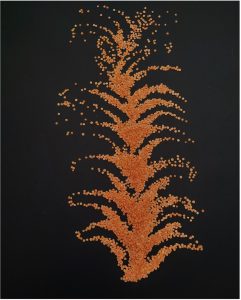
Amelia De Lazzari, “Fire” (Red Lentil -Lens culinaris)
“For these compositions I chose some of the most common and ancient seeds. Quinoa, lentils, lupines, black peas are very nutritious edible seeds and they are important for feeding living beings. For thousands of years they have been the basis of the diet of many populations around the world. The cultivation of these seeds is, moreover, sustainable, and in the view of a future where the climate will probably be very different, these ancient, robust and resilient precious seeds will be indispensable for the life of human and non-human beings. But in order for the seeds to bear fruit they must be kept in the soil, another precious component of our life that needs to be looked after and respected.
For a fair and sustainable future, it will therefore be important to protect seeds as a heritage of humanity. Every ancient seed, found, rare, adapted, lost and saved is a precious commodity to support a natural agricultural and food diversity.” (Amelia De Lazzari, Italy)
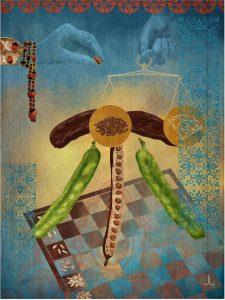
Jennifer Lange, Fabled Treasures, Painting
“In older times, the weight measure karat was deduced from the seeds of the carob tree that allegedly always had the same weight. This has been debunked, but the weight measure persists. Equally, the ratio was deduced from the jequirity bean. Finally, there is the math problem of the rice and chessboard: a ruler wants to reward his advisor, who modestly asks that the ruler fill a chessboard with one grain of rice on the first field, twice that on the second field, and twice again on the third. In the end, he asks for more than the rice harvest of the country. These tales have inspired me to show how the seemingly small seed has an immense impact on not only food, but legend and wealth as well.” (Jennifer Lange, Germany)
The depicted seeds are from Abrus precatorius, Ceratonia siliqua, and a variety of Oryza, all of which are preserved in the international seed vault.
#
Sara Michieletto is a violinist and composer who is deeply passionate about plants. Recently, she has been conducting artistic research on the unraveling of the language that unites music and biosphere.
Counterpoint blogs may be reprinted with the following acknowledgement: “This article was published by Counterpoint Navigating Knowledge on 9 November 2022.”
The views and opinions expressed on this website, in its publications, and in comments made in response to the site and publications are those of the author(s) and do not necessarily reflect the views and opinions of Counterpoint: Navigating Knowledge, its founders, its staff, or any agent or institution affiliated with it, nor those of the institution(s) with which the author is affiliated. Counterpoint exists to promote vigorous debate within and across knowledge systems and therefore publishes a wide variety of views and opinions in the interests of open conversation and dialogue.
Image credits: © with the respective artists; used with permission.
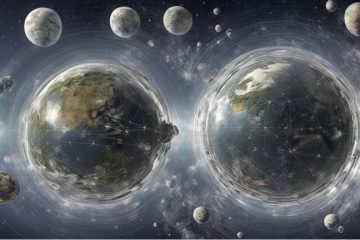
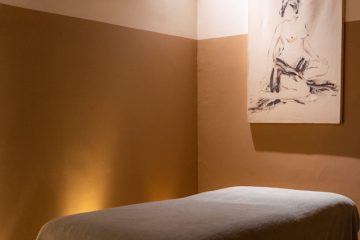
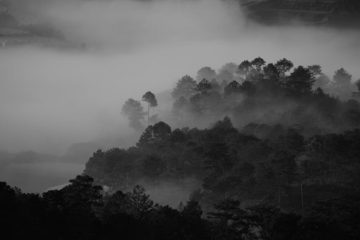

1 Comment
Artistsforplants · September 8, 2023 at 9:22 AM
Artistsforplants presents “Rooting our cities – focusing on the unexpected guests”, the 2023 Call, aimed at imaging a world in which cities are full of plants that live in perfect harmony with the urban environment.
You can participate by sending your work, in any form of art, to the email address [email protected] by 30 September 2023.
If you wish to know more, visit the website http://www.artistsforplatns.com
We are waiting for you!